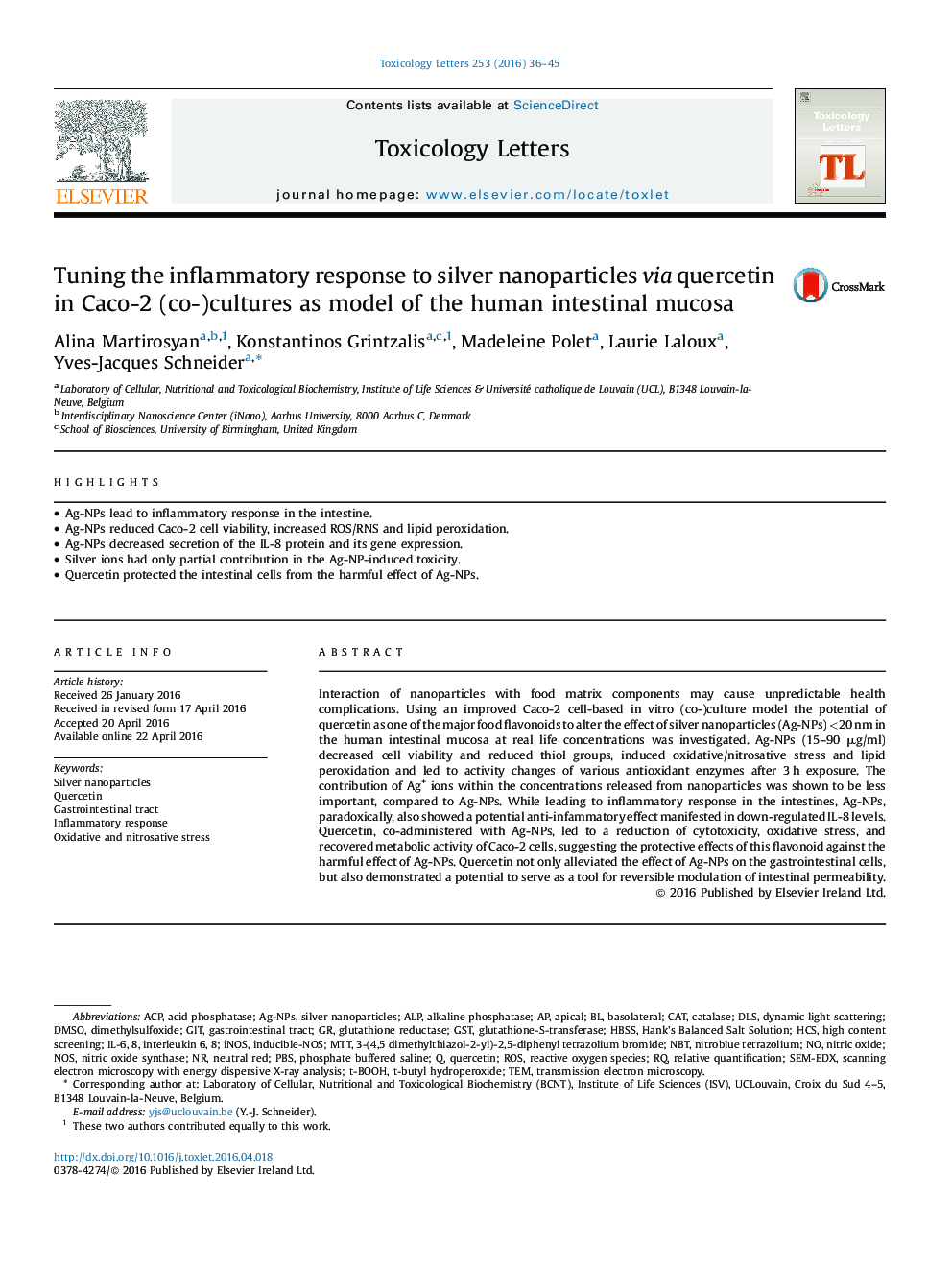| Article ID | Journal | Published Year | Pages | File Type |
|---|---|---|---|---|
| 2598482 | Toxicology Letters | 2016 | 10 Pages |
•Ag-NPs lead to inflammatory response in the intestine.•Ag-NPs reduced Caco-2 cell viability, increased ROS/RNS and lipid peroxidation.•Ag-NPs decreased secretion of the IL-8 protein and its gene expression.•Silver ions had only partial contribution in the Ag-NP-induced toxicity.•Quercetin protected the intestinal cells from the harmful effect of Ag-NPs.
Interaction of nanoparticles with food matrix components may cause unpredictable health complications. Using an improved Caco-2 cell-based in vitro (co-)culture model the potential of quercetin as one of the major food flavonoids to alter the effect of silver nanoparticles (Ag-NPs) <20 nm in the human intestinal mucosa at real life concentrations was investigated. Ag-NPs (15–90 μg/ml) decreased cell viability and reduced thiol groups, induced oxidative/nitrosative stress and lipid peroxidation and led to activity changes of various antioxidant enzymes after 3 h exposure. The contribution of Ag+ ions within the concentrations released from nanoparticles was shown to be less important, compared to Ag-NPs. While leading to inflammatory response in the intestines, Ag-NPs, paradoxically, also showed a potential anti-infammatory effect manifested in down-regulated IL-8 levels. Quercetin, co-administered with Ag-NPs, led to a reduction of cytotoxicity, oxidative stress, and recovered metabolic activity of Caco-2 cells, suggesting the protective effects of this flavonoid against the harmful effect of Ag-NPs. Quercetin not only alleviated the effect of Ag-NPs on the gastrointestinal cells, but also demonstrated a potential to serve as a tool for reversible modulation of intestinal permeability.
